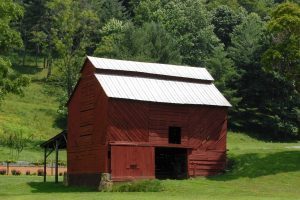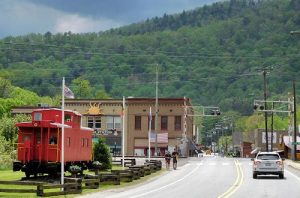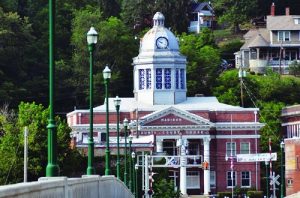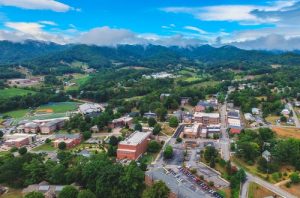Rafters on the French Broad River catch a glimpse of the Victorian house as they drift by and hikers on the Laurel River Trail may walk past remnants of the foundations of buildings and railroad trestles from the Runion community which grew up as a result of the logging industry.
In 1870, Amos Stackhouse moved to Hot Springs (which was then called Warm Springs), a favorite destination for city dwellers to escape the heat of Southern summers. Although an outsider (a Yankee originally from Pennsylvania via Ohio and Florida), Stackhouse quickly became part of the community. He operated a small store across the river from the Warm Springs Hotel. Eight years later he purchased 605 acres and opened an “Upper Store” four miles up the French Broad—in the area that would become known as Stackhouse.
This second location grew into a successful thriving enterprise. Along with the new store he served as banker, lending agent and pharmacist. A post office was established in 1883 and Stackhouse was appointed Postmaster. The arrival of the railroad in 1882 added another element of success to the Stackhouse family. The area economy was based on barite (an extender or weighing agent used in drilling for petroleum or gas mining) and Carolina Barytes was one of the larger mill houses in Stackhouse area. The lumber business began to grow in the late 1890s and the sawmill run by Amos Stackhouse, Jr., brought jobs to the area. The store and other businesses grew into a small community and an important source of livelihood for many during that time. The community of Runion grew up nearby as a result.
Amos Stackhouse, Jr. and his wife Hester built a house in 1905 shortly before Amos Sr’s death in 1909. This beautiful Victorian home with a huge porch was built on a hill overlooking the French Broad. Outbuildings were added including a long, narrow building which was a “ten-pin alley.” The house was extensively remodeled by Gilbert Stackhouse and his wife Nita, who had inherited the house after Amos, Jr’s death. They moved the old railroad sign “STACKHOUSE” to the fascia board of the house. Gilbert Stackhouse was the last male to bear the name that lived in the house. When he died in 1989, their daughter Nancy and her husband Dave Aumiller continued to live there.
The decline of the community began with the Great Flood of July 1916 which destroyed quite a bit of the property including Carolina Barytes. Amos’ sawmill –the Laurel River Logging Company–received some damage, also. That decline was made worse by World War I and the accompanying economic instability which was followed by the flu epidemic, then the Great Depression and World War II causing many (including family descendants) to move away from the area. The last mining operation was finally closed in the 1960s.
The store and all of the outbuildings have long since disappeared, but the lovely old home remains in all its majesty. Follow Stackhouse road (off Highway 25/70–9.4 miles from the intersection of Hwy 213 & Hwy 25/70) down a beautiful winding drive and you will soon see the rapids of the French Broad and Stackhouse above keeping watch.
Information about the Stackhouse family and the community was provided by Jacqueline Burgin Painter, a native of Hot Springs, who has written The Stackhouses of Appalachia: Even to Our Own Times, a detailed history of the family and their impact on the economy and culture of Madison County.








